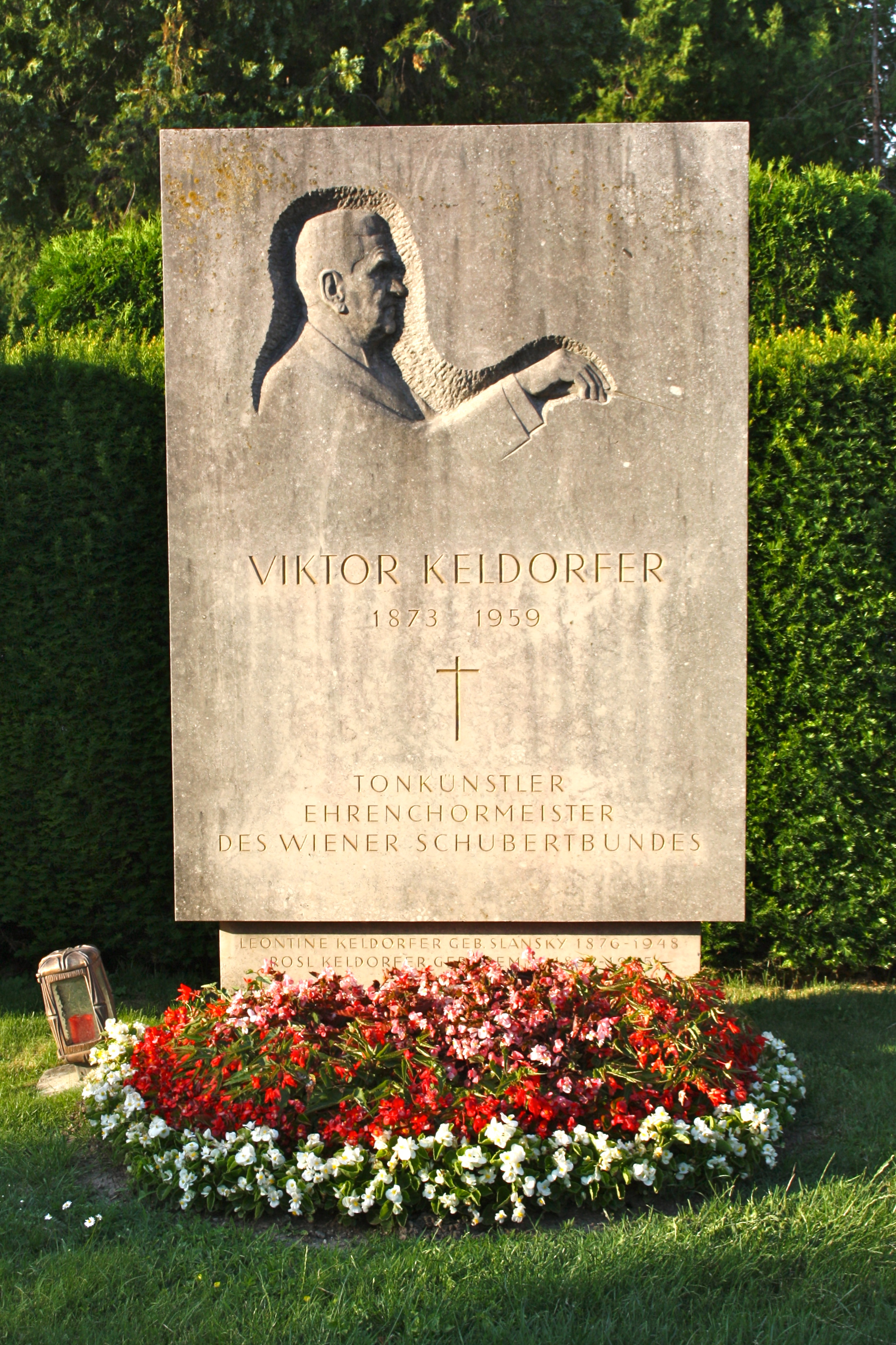|
Herbstlied, WAB 73
' (Autumn song), WAB 73, is a romantic song composed by Anton Bruckner in 1864. The song, scored for men's choir and two soprano soloists with piano accompaniment, depicts an autumn walking with nightingale song. History Bruckner composed the song on a text of Friedrich von Sallet on 19 March 1864.U. Harten, pp. 196-197C. van Zwol, p. 724 Bruckner dedicated the song to his friend Josef Hafferl, chairman of the Liedertafel ''Frohsinn''. The piece was performed on 24 November 1864 in the ' of Linz by ''Frohsinn'' under Bruckner's baton, with Marie Schimatschek and Anna Bergmann as soloists.C. Howie, Chapter III, pp. 88-89 A copy of the work, of which the original manuscript is lost, is stored in the archive of the Liedertafel ''Frohsinn''. The piece, which was first issued by Viktor Keldorfer ( Universal Edition) in 1911, is issued in Band XXIII/2, No. 16 of the '. Text ''Herbstlied'' is using a text by Friedrich von Sallet. Music The 69-bar long work in F-sharp minor ... [...More Info...] [...Related Items...] OR: [Wikipedia] [Google] [Baidu] |
Anton Bruckner
Josef Anton Bruckner (; 4 September 182411 October 1896) was an Austrian composer, organist, and music theorist best known for his symphonies, masses, Te Deum and motets. The first are considered emblematic of the final stage of Austro-German Romanticism because of their rich harmonic language, strongly polyphonic character, and considerable length. Bruckner's compositions helped to define contemporary musical radicalism, owing to their dissonances, unprepared modulations, and roving harmonies. Unlike other musical radicals such as Richard Wagner and Hugo Wolf, Bruckner showed extreme humility before other musicians, Wagner in particular. This apparent dichotomy between Bruckner the man and Bruckner the composer hampers efforts to describe his life in a way that gives a straightforward context for his music. Hans von Bülow described him as "half genius, half simpleton". Bruckner was critical of his own work and often reworked his compositions. There are several version ... [...More Info...] [...Related Items...] OR: [Wikipedia] [Google] [Baidu] |
Werkverzeichnis Anton Bruckners
Anton Bruckner is best known for his symphonic works; there are 11 symphonies (the last with an unfinished finale), most of them in several versions. He also composed a few other smaller orchestral works (one overture, one march and three 'small orchestral pieces'), and sketched another symphony. Bruckner also composed a considerable amount of choral music. There are 59 religious works, of which there are 17 larger choral works (seven masses, two requiems, one religious cantata, five psalm settings, one ''Te Deum'' hymn and one ''Magnificat'' hymn), 40 smaller choral works (16 hymns, six antiphons, six graduals, three settings of the offertorium, two chorale, two religious elegies, two '' Libera me'', one litany and two other motets), of which a few are in two or three versions, and two '' aequali'' for three trombones. In addition, Bruckner made sketches for two other masses and another requiem. Bruckner also composed 44 ''Weltliche Chorwerke'' (secular choral works), seven ... [...More Info...] [...Related Items...] OR: [Wikipedia] [Google] [Baidu] |
Uwe Harten
Uwe Harten (born 16 August 1944) is a German musicologist, who works in Austria. Life Born in , Harten grew up in Hamburg, where he was a boy soprano at the Staatsoper. He took over the roles of a child. In Hamburg he also began his studies of musicology and art history, which he continued in Vienna with Erich Schenk. He gained his doctorate with his study of the Viennese Schumann admirer Carl Debrois van Bruyck. He then worked as a dramaturgical assistant at the Vienna Chamber Opera. Furthermore, he assisted Anthony van Hoboken in the production of his Werkverzeichnis of Joseph Haydn. Since 1972 he has been a member of the at the Österreichische Akademie der Wissenschaften. Since 1974 he has been secretary and member of the board of directors of the Denkmäler der Tonkunst in Österreich. In addition Harten worked as an assistant at the since its foundation in 1978. From 1988 to 2000 he was also its deputy scientific director and participated between 1977 and 2000 in ... [...More Info...] [...Related Items...] OR: [Wikipedia] [Google] [Baidu] |
August Göllerich
August Göllerich (2 July 185916 March 1923) was an Austrian pianist, conductor, music educator and music writer. He studied the piano with Franz Liszt, who made him also his secretary and companion on concert tours. Göllerich is known for studying the life and work of Anton Bruckner whose secretary and friend he was. He initiated and conducted concerts of Bruckner's music in Linz, and wrote an influential biography. Life Born in Linz, the son of the Wels town secretary and later member of the Reich Council and State Parliament and his wife Maria, née Nowotny, Göllerich grew up in middle-class circumstances. His father was a member of a liberal writers and literary association in Wels. Göllerich attended the Linz Realschule, which he completed with the Matura. He studied mathematics at the University of Vienna, as his father wished. In 1882, he attended the Bayreuth Festival. After his father's death in 1883, he devoted himself entirely to music, studying in Vienna the pia ... [...More Info...] [...Related Items...] OR: [Wikipedia] [Google] [Baidu] |
Bar (music)
In musical notation, a bar (or measure) is a segment of time corresponding to a specific number of beats in which each beat is represented by a particular note value and the boundaries of the bar are indicated by vertical bar lines. Dividing music into bars provides regular reference points to pinpoint locations within a musical composition. It also makes written music easier to follow, since each bar of staff symbols can be read and played as a batch. Typically, a piece consists of several bars of the same length, and in modern musical notation the number of beats in each bar is specified at the beginning of the score by the time signature. In simple time, (such as ), the top figure indicates the number of beats per bar, while the bottom number indicates the note value of the beat (the beat has a quarter note value in the example). The word ''bar'' is more common in British English, and the word ''measure'' is more common in American English, although musicians generally u ... [...More Info...] [...Related Items...] OR: [Wikipedia] [Google] [Baidu] |
Universal Edition
Universal Edition (UE) is a classical music publishing firm. Founded in 1901 in Vienna, they originally intended to provide the core classical works and educational works to the Austrian market (which had until then been dominated by Leipzig-based publishers). The firm soon expanded to become one of the most important publishers of modern music. History In 1904, UE acquired Aibl publishers, and so acquired the rights to works by Richard Strauss, Max Reger, and other composers, but it was the arrival of Emil Hertzka as managing director in 1907 (who remained until his death in 1932) which really pushed the firm towards new music. Under Hertzka, UE signed contracts with a number of important contemporary composers, including Béla Bartók and Frederick Delius in 1908; Gustav Mahler and Arnold Schoenberg in 1909 (Mahler's '' Symphony No. 8'' was the first work UE acquired an original copyright to); Anton Webern and Alexander von Zemlinsky in 1910; Karol Szymanowski in 1912; Leoš J ... [...More Info...] [...Related Items...] OR: [Wikipedia] [Google] [Baidu] |
Viktor Keldorfer
Viktor Josef Keldorfer (14 April 1873 – 28 January 1959) was an Austrian conductor of male voice choirs, in particular from 1922 to 1954 of the ''Wiener Schubertbund'', and was a chairman of choir associations. Life Keldorfer was born in Salzburg in 1871, one of 21 children of Joseph Keldorfer, head of police supervision, and his wife Antonie, daughter of the painter . Viktor Keldorfer, like his brothers, sang as a boy in the choir of the Franciscan Church, Salzburg, of which his father is thought to have been a conductor. He later attended teacher training college and the Mozarteum University in Salzburg."Keldorfer, Familie"" ''Oesterreichisches Musiklexikon online''. Retrieved 15 May 2021. He moved to Vienna in 1892, where he was a primary school teacher, and in the following year joined the '' |
Vienna
en, Viennese , iso_code = AT-9 , registration_plate = W , postal_code_type = Postal code , postal_code = , timezone = CET , utc_offset = +1 , timezone_DST = CEST , utc_offset_DST = +2 , blank_name = Vehicle registration , blank_info = W , blank1_name = GDP , blank1_info = € 96.5 billion (2020) , blank2_name = GDP per capita , blank2_info = € 50,400 (2020) , blank_name_sec1 = HDI (2019) , blank_info_sec1 = 0.947 · 1st of 9 , blank3_name = Seats in the Federal Council , blank3_info = , blank_name_sec2 = GeoTLD , blank_info_sec2 = .wien , website = , footnotes = , image_blank_emblem = Wien logo.svg , blank_emblem_size = Vienna ( ; german: Wien ; ba ... [...More Info...] [...Related Items...] OR: [Wikipedia] [Google] [Baidu] |
Lower Austria
Lower Austria (german: Niederösterreich; Austro-Bavarian: ''Niedaöstareich'', ''Niedaestareich'') is one of the nine states of Austria, located in the northeastern corner of the country. Since 1986, the capital of Lower Austria has been Sankt Pölten, replacing Vienna which became a separate state in 1921. With a land area of and a population of 1.685 million people, Lower Austria is the second most populous state in Austria (after Vienna). Other large cities are Amstetten, Klosterneuburg, Krems an der Donau, Stockerau and Wiener Neustadt. Geography With a land area of situated east of Upper Austria, Lower Austria is the country's largest state. Lower Austria derives its name from its downriver location on the Enns River which flows from the west to the east. Lower Austria has an international border, long, with the Czech Republic (South Bohemia and South Moravia Regions) and Slovakia (Bratislava and Trnava Regions). The state has the second longest external border of all A ... [...More Info...] [...Related Items...] OR: [Wikipedia] [Google] [Baidu] |
SATB
SATB is an initialism that describes the scoring of compositions for choirs, and also choirs (or consorts) of instruments. The initials are for the voice types: S for soprano, A for alto, T for tenor and B for bass. Choral music Four-part harmony using soprano, alto, tenor and bass is a common scoring in classical music, including chorales and most Bach cantatas.Shrock, DennisChoral Repertoire''Oxford University Press'', 2009, p. 298, The letters of the abbreviation are also used by publishers to describe different scorings for soloists and choirs other than four-part harmony. For example, the listing "STB solos, SATB choir", of Bach's ''Wachet auf, ruft uns die Stimme'', BWV 140, indicates that a performance needs three soloists: soprano, tenor and bass, and a four-part choir. "SATB/SATB" is used when a double choir is required, as in Penderecki's ''Polish Requiem''. or SSATB, with divided sopranos, which is a typical scoring in English church music. A listing for Bach's ''M ... [...More Info...] [...Related Items...] OR: [Wikipedia] [Google] [Baidu] |
Linz
Linz ( , ; cs, Linec) is the capital of Upper Austria and third-largest city in Austria. In the north of the country, it is on the Danube south of the Czech border. In 2018, the population was 204,846. In 2009, it was a European Capital of Culture. Geography Linz is in the centre of Europe, lying on the Paris–Budapest west–east axis and the Malmö–Trieste north–south axis. The Danube is the main tourism and transport connection that runs through the city. Approximately 29.27% of the city's wide area is grassland. A further 17.95% are covered with forest. All the rest areas fall on water (6.39%), traffic areas and land. Districts Since January 2014 the city has been divided into 16 statistical districts: Before 2014 Linz was divided into nine districts and 36 statistical quarters. They were: #Ebelsberg #Innenstadt: Altstadtviertel, Rathausviertel, Kaplanhofviertel, Neustadtviertel, Volksgartenviertel, Römerberg-Margarethen #Kleinmünchen: Kleinmünchen, Neue ... [...More Info...] [...Related Items...] OR: [Wikipedia] [Google] [Baidu] |




